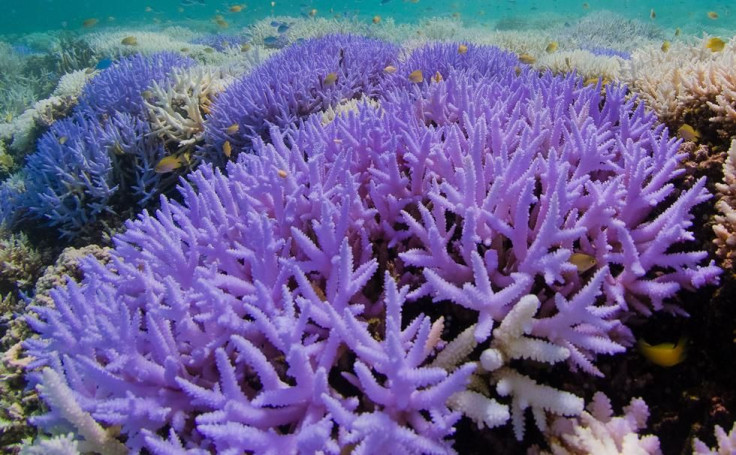Corals That Bleach Neon Instead Of White Are Fighting For Their Lives: Study

KEY POINTS
- In some coral bleaching events, the corals turn neon instead of white
- According to a new study, the corals that turn neon are fighting to recover
- The colorful display is actually a protective layer, much like a sunscreen
- These colorful events occur in mild or brief heat stress episodes, not extreme ones
Some corals tend to turn neon instead of white when they bleach, which according to researchers of a new study, could be a sign that they are fighting to recover.
Corals may look like plants but are actually invertebrate animals that rely on their symbiosis with the algae that live within their cells. When the corals get stressed due to changes in conditions, such as temperature or light, they expel the algae living in their tissues, exposing their skeleton and causing them to turn white. This is a phenomenon known as coral bleaching, and many people are aware of them through photos of vast white coral reefs.
However, there have been instances wherein the corals did not turn completely white but instead displayed bright colors when they experience bleaching. According to CNN, there have been at least 15 colorful bleaching events all across the world between 2010 and 2019.
To find out what makes these colorful bleachings different, researchers from the University of Southampton, England, conducted controlled experiments in a laboratory by exposing the corals to different conditions.
They found the colorful display was actually the corals releasing a layer much like a sunscreen, protecting itself while also encouraging the algae to come back.
"However, if the coral cells can still carry out at least some of their normal functions, despite the environmental stress that caused bleaching, the increased internal light levels will boost the production of colourful, photoprotective pigments. The resulting sunscreen layer will subsequently promote the return of the symbionts," head of the University of Southampton Coral Reef Laboratory, Professor Jörg Wiedenmann, said in a news release from the university.
"As the recovering algal population starts taking up the light for their photosynthesis again, the light levels inside the coral will drop and the coral cells will lower the production of the colourful pigments to their normal level."
Simply put, the colorful display is actually the corals' way of trying to survive the bleaching event. This raises hope that the bleached corals in some regions could recover.
That said, the researchers believe the corals that undergo this colorful process are those that experienced mild or brief disturbances, not extreme events. According to Dr Elena Bollati, now of the National University Singapore but who worked on the study during her PhD at the University of Southampton, the temperature history of known colorful bleaching events reveal these happen during mild or brief heat stress episodes.
As such, the study gives hope that corals in some regions of the world could recover better. However, reducing greenhouse gasses and improving water quality are still important parts of helping corals recover.
"Bleaching is not always a death sentence for corals, the coral animal can still be alive. If the stress event is mild enough, corals can re-establish the symbiosis with their algal partner," study co-author Dr. Cecilia D'Angelo explained. "Unfortunately, recent episodes of global bleaching caused by unusually warm water have resulted in high coral mortality, leaving the world’s coral reefs struggling for survival."
© Copyright IBTimes 2025. All rights reserved.






















